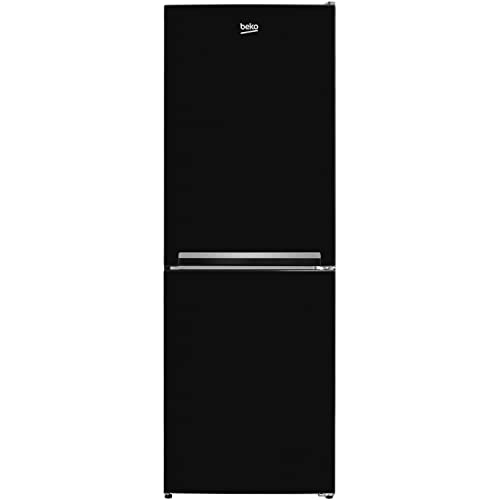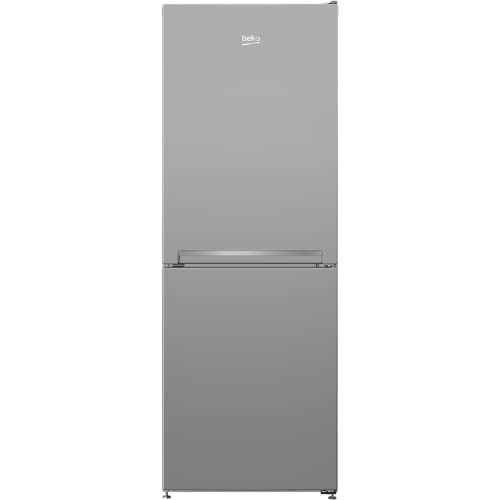What's The Current Job Market For Fridge Freezer Frost Free Profession…
페이지 정보
Writer : Irving
Date : 24-11-23 05:59
Hit : 4
Related Link
본문
 Why Choose a Fridge Freezer Frost Free?
Why Choose a Fridge Freezer Frost Free?If you opt for a fridge freezer frost free it will eliminate the need to defrost it - saving you time and effort. These models also have more storage space than those without this feature.
Secure the areas around the kitchen from water drips during defrosting by placing towels or old sheets close to the appliance.
No need to defrost
Fridge Freezers that use Total No Frost technology circulate cool air around both compartments. This prevents ice from ever forming on the walls of the freezer. This is an excellent solution for those who store a lot of items in their freezer but don't want be forced to manually defrost the unit each year. If you still find yourself with a build-up of ice, the appliance is likely to go through an automated defrost process.
A frost-free freezer has the obvious benefit of not needing to defrost, which is a time-consuming and laborious process that can last up to 24 hours. But, having a frost-free freezer also means that you can store more food in the freezer because it won't lose storage space to ice.
Another great advantage of a frost free freezer is that it has greater energy efficiency than fridges freezers fridge freezers with a traditional defrost system which is the best fridge freezer to buy means you'll reduce your electricity bills. Defrosting the refrigerator freezer is typically required when it is surrounded by an excessive amount ice. The ice blocks the refrigeration system from cooling the freezer efficiently.
This is generally caused by an inefficient thermostat that is not regulating the temperature correctly. The freezer could have been shut and opened often, allowing humidity to get into the freezer. To avoid this, it is best to wait until food is cold before placing it in the freezer, and make sure that all containers are tightly sealed.
By not overfilling your fridge-freezer will reduce the likelihood of it defrosting. It is best to store food in separate containers and use smaller portions at a time rather than overfilling the freezer. This will also ensure that the freezer fan isn't obstructed and is able to circulate air in a proper manner.
Make sure the seal on the door isn't damaged. This is what keeps air from getting into the freezer and fridge freezer for sale. If the seal is damaged, this can allow warm air to enter the fridge, which could cause condensation of frost on the evaporator coil. To avoid this from happening, clean the evaporator with a specific spray, which will help remove any frost that may have built up.
No more ice build-up
The absence of ice build-up means that you'll need to defrost your freezer less often. However, if you notice frost building up on the back of your freezer, it could indicate that your fridge freezer isn't properly defrosting. If a refrigerator or freezer defrosts correctly it will shut off its cooling system every 6 hours for 20 minutes so that the heaters can prevent frost from forming behind the back wall and also on the evaporator. This ensures that air can flow freely across the freezer and refrigerator, and prevents food items from freezing to a hard consistency.
Make sure that the seal on the freezer door isn't damaged or blocked. It's also important to ensure that you're not overfilling the freezer or storing your items in plastic bags or other containers that do not allow cold air to circulate around them. Make sure that your freezer isn't too close to a heater or radiator.
If you need to take out a build-up of frozen ice from your freezer, it's best not to use a knife or any other sharp instrument since it could cause damage to the appliance. Instead, disconnect the freezer and let the ice melt. Then, clean the interior and plug it back in.
You can also put an old towel in front of the fridge and wait for it to melt. Then, you can wipe the freezer clean with a dry cloth and check that the temperature is in order before replenishing it.
Investing in a refrigerator freezer with frost-free functionality can save you lots of time and effort, so make sure to think about this option when choosing your next kitchen appliance. Contact an Abt expert if you need more assistance or advice on selecting your new freezer. They will be able to locate the ideal appliance that will fit your needs and budget. They'll also provide support with your installation and any after sales problems you may have.
No more smells
The frost-free models are not affected by this issue. Contrary to conventional fridge freezers, in which smelly odors can make their way into the freezer, and then contaminate food, the frost-free models are not affected by the same problem. The compressor circulates air to cool them. The air is then chilled to a temperature of 0°C so that it doesn't produce odours. Nevertheless, it's important to keep foods in airtight containers or wrap them up in plastic bags, plastic coated freezer paper, heavy-duty foil or similar to limit the amount of moisture that can escape from food into the fridge.
Despite being frost-free, these fridge freezers still need defrosting from time to intervals. This is due to the fact that they're not as efficient as traditional freezers. The evaporator coils sit in the back of the freezer, and a defrost heater is used to melt frost on it when it forms. If this isn't functioning, the frost could build up on the evaporator and lead to cooling issues.
If you don't use an automatic defrost system you'll need to defrost the freezer manually every now and then. This only takes a few minutes and won't affect the flavor of food. If you own a Frost Free model, with Total No Frost Technology, it won't need to defrost as it circulates cool air continuously around both compartments, preventing any accumulation of ice on the wall of the cabinet.
The odours inside fridge freezers are caused by volatile chemical compounds, which react with water, while others don't. If the bad smells are the result of spoilage of microbial matter, the chemicals will be released into the freezer and infect the food inside it. If the smells in the fridge aren't caused by anything, they'll stay there until they are ejected through the vents, or eliminated through defrost cycles.
If odours begin to penetrate the freezer, it's most likely a problem with the seal or an issue with the cooling process. Moisture can get into the fridge freezer if the door to the freezer is left open, allowing warm moist air to enter, or if the food containers are packed too tightly, restricting airflow.
Easy to clean
Fridge freezer frost free models are more easy to clean than traditional models that need manual defrosting. With the freezer empty, you can clean it with a baking soda and water solution. Mix one tablespoon of baking powder and a quart of warm water. Dip a microfiber towel in the solution and wipe down all interior surfaces. You can even wipe down the seal around the door if it gets dirty. The cooling coils on the back of the fridge are also easier to clean since they do not have any ice. Be sure not to hinder the small vents in the freezer. They are there to allow air to circulate. This is where papers or crumpled up crumbs as well as twist ties get sucked into making it impossible for the fan to work.
If your freezer smells like spoiled food, you may require the use of activated charcoal in an open container in the freezer for a few days to lessen or eliminate the smell. You can find this type of charcoal in the cleaning section of grocery stores.
It's a good idea cover the floor of your freezer with old towels or cloths prior to the time you return your frozen food items. This will prevent melting ice from taking up too much moisture. Make sure to wash your freezer's drawers, bins and the ice tray prior to placing them back into the freezer.
To prevent the need to defrost to avoid the need to defrost, purchase a refrigerator/freezer with Total No Frost Technology. This technology keeps the freezer compartment at even 0°F and circulates cool air to stop the formation of ice on the walls of the cabinet. It's a solution that can save you a lot of time and money in the long term and will also keep your food fresher for longer.
 Defrosting a conventional refrigerator is still required at least once a year or when the ice layer is at a thickness of 1/4 inch. Also, always check that the gasket on the door is sealing properly by shutting the freezer using an article of paper. If it is easily removed the gasket must be replaced.
Defrosting a conventional refrigerator is still required at least once a year or when the ice layer is at a thickness of 1/4 inch. Also, always check that the gasket on the door is sealing properly by shutting the freezer using an article of paper. If it is easily removed the gasket must be replaced.



 TOP
TOP